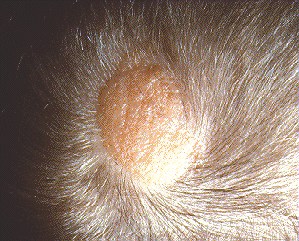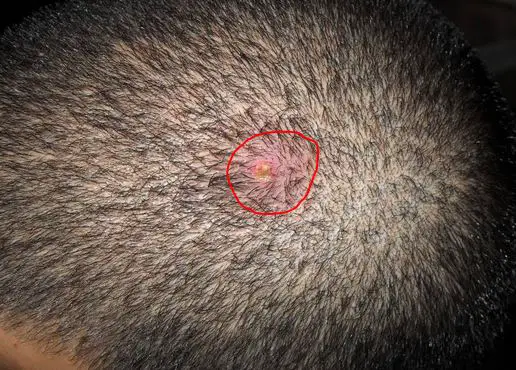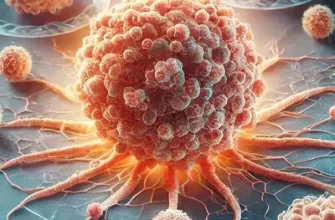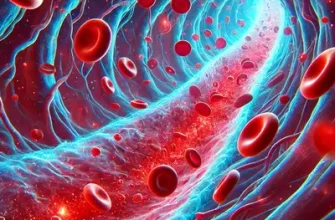Abnormal cell growth on the scalp, known as cancerous lumps, can result in different types of cancer, such as skin cancer or lymphoma. Initially, these lumps are typically painless and can easily go unnoticed.
However, as they grow larger, they may cause discomfort, itching, and inflammation. In some instances, the cancerous lumps may also bleed or release fluid. It is important to understand that not all scalp lumps are cancerous, as they can be caused by various factors like infections or cysts.
Causes of Cancerous Lumps on the Scalp
Having tumors that are cancerous on the head can be distressing. It is vital to understand that not all bumps are cancerous, but it is necessary to identify the potential causes of them. Below are five common factors that can lead to cancerous lumps on the scalp.
- Skin cancer: Skin cancer is the primary cause of cancerous growths on the scalp. The two most common types of skin cancer that can occur on the scalp are basal cell carcinoma and squamous cell carcinoma. Excessive sun exposure or genetics can be responsible for the development of these types of cancer.
- Melanoma: Melanoma is a different form of skin cancer that has the potential to form bumps on the scalp. Unlike basal cell and squamous cell carcinoma, melanoma has a tendency to spread rapidly and can be fatal if not treated.
- Lymphoma: Lymphoma is a type of cancer that affects the lymphatic system. When this form of cancer develops on the scalp, it can cause lumps to form. Lymphoma is often treated with combination chemotherapy.
- Leukemia: Leukemia is a type of blood cancer that can sometimes cause lumps on the scalp. This happens when leukemia cells develop in the scalp and cause inflammation. Treatment for leukemia often involves chemotherapy and radiation therapy.
- Metastatic cancer: When cancer cells from another part of the body spread to the scalp, they can cause lumps to form. This is known as metastatic cancer. Treatment for metastatic cancer often depends on the type and stage of cancer involved.
If you observe a swelling on your head, it is crucial to promptly seek medical help. Although not all lumps are cancerous, detecting cancer at an early stage can greatly enhance your likelihood of receiving effective treatment.
Diagnosis & Treatment Methods for Cancerous Lumps on Scalp
1. Diagnosis Confirmation:
It is important to confirm the diagnosis before considering any lump on the scalp as cancer. This usually includes:
- Consultation with a dermatologist or oncologist: A specialist can assess the lump and determine the need for further testing.
- Biopsy: A technique where a small piece of tissue is taken from the lump and examined using a microscope.
- Imaging tests: To evaluate the scope of cancer, medical professionals may use MRI, CT scans, or PET scans.
2. Determining the Cancer Type and Stage:
Understanding the type of cancer and the stage of its progression is essential for formulating a treatment plan. The common types of cancer that may present as lumps on the scalp include:
- Basal cell carcinoma
- Squamous cell carcinoma
- Malignant melanoma
- Metastases from other cancer sites
3. Treatment Options:
Surgical Methods:
- Excisional Surgery: The cancerous lump along with some surrounding healthy tissue is surgically removed.
- Mohs Micrographic Surgery: This technique involves the removal of the cancer layer by layer, examining each layer under the microscope until no cancerous cells remain.
Radiation Therapy:
- External Beam Radiation: High-energy beams are directed at the cancer to destroy cancer cells.
- Brachytherapy: Radiation is delivered directly to the cancer site through implants near the lump.
Chemotherapy:
- Works by using drugs to destroy cancer cells throughout the body. It can be systemic or applied locally in the form of creams for certain skin cancers.
Targeted Therapy and Immunotherapy:
- These treatments focus on specific molecular targets associated with cancer or rally the immune system to fight off the cancer cells.
4. Aftercare and Monitoring:
- Regular Follow-up Appointments: These are critical for catching any recurrence early.
- Self-examinations: Patients should regularly check the scalp and surrounding areas for any changes.
- Supportive Care: This includes pain management, psychological support, and rehabilitation services.
5. Lifestyle Adjustments and Preventative Measures:
- Sun Protection: Using sunscreen, wearing hats, and avoiding direct sunlight during peak hours can reduce the risk of developing further skin cancer.
- Healthy Diet and Exercise: A balanced lifestyle can improve overall health and aid in recovery.
- Avoiding Tobacco and Quitting Alcohol: These substances can increase the risk of cancer and hinder treatment effectiveness.
6. Clinical Trials:
Participation in clinical trials may offer access to new and innovative treatments for those who are eligible.
7. Multidisciplinary Approach:
It is often beneficial to involve a team of medical professionals for comprehensive care, including a dermatologist, oncologist, plastic surgeon, counselor, and nutritionist.
Important Note: The specifics of the treatment plan should be discussed in detail with healthcare providers, taking into account individual health condition, cancer type, stage, and patient preferences.
Each treatment method has its risks and benefits, which must be weighed carefully. Early detection and prompt treatment typically lead to better outcomes in the management of cancerous lumps on the scalp.
Cancerous Lumps on Scalp: Questions and Answers
Can skin cancers take place on the scalp?
Yes, definitely. Melanoma type skin cancers can occur on any part of the body which has pigment-producing cells (melanocytes), and that consists of the skin of the scalp.
Should I be fretted about a mole on the scalp?
If you have just recently discovered a mole on your scalp or think that an existing mole might have changed, you ought to get a skin check as quickly as possible making sure it is not A Melanoma– an extremely harmful type of skin cancer, according to iytmed.com. Scalp melanomas have been shown to be more deadly than other melanomas, with one study revealing scalp and neck melanomas deaths were almost two times as common compared with melanomas in other places on the body.

Why are scalp melanoma skin cancers more harmful?
The most typical factor is because of a delay in diagnosis, unless you are purposely attempting to look for them. Some also believe that the scalp supplies the right conditions for the melanoma to spread out, because it has abundant blood vessels and lymphatics.
Can other skin cancers occur on the scalp?
Yes, other skin cancers such as Basal cell carcinoma (BCC) and squamous cell carcinoma (SCC) can happen on the scalp.
What do skin cancers on the scalp appear like?
The look of skin cancer on the scalp will vary depending on the type of skin cancer. Any of the three main types of cancer that can occur on your skin can appear on the scalp.










a friend has had repeated scalp cysts….removed…but one had carcinoma….dr was shocked when he got biopsy…..there is no further treatment my friendwas advised….they had taken a wide perimeter. he has
had subsequent cysts removed no cancer…..waiting
for results of most recent…..is there no further treatment for cyst carcinomas on scalp?